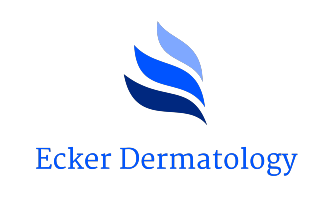Mohs micrographic surgery is a specialized, skin-sparing surgery mostly used for skin cancers of the head and neck. It is also utilized for more aggressive skin cancers on the body. In addition to providing the highest cure rate available (99% for primary basal cell carcinoma, for example), it also tends to lead to smaller scars. Traditionally, skin cancers were removed with significant margins to ensure removal of the cancer, however, this left large defects. On the head and neck in particular, these can be difficult to close and leave large, unsightly scars. With Mohs surgery, only the diseased skin is removed, and healthy tissue is left intact. The technique involves checking 100% of the excised margin under the microscope while you wait. If any part of the margin is positive, another layer is taken, but just in the area or areas where skin cancer was still seen. Once all the skin cancer is removed, a closure is often performed. Dr. Ecker and his team are skilled in primary closures, flaps, and grafts. At times, we may recommend that mother nature be allowed to heal in a defect (so called second intention healing), a synthetic graft, or referral to plastic surgery for reconstruction.
Download the Mohs Information Pamphlet here.
Superficial radiation therapy, or SRT, is a great way to treat some non-melanoma skin cancers, such as basal cell and squamous cell carcinoma. Dr. Ecker likes this modality particularly for sites that are often difficult to operate on due to tight skin and unforgiving scars. The scalp, shin, and nose are particularly good sites to consider SRT, but potentially any site can be treated with it. It doesn't leave a scar in the traditional sense.
Positives:
Negatives:
These treatments are often used for superficial skin cancers on the body, including superficial basal cell carcinoma and squamous cell carcinoma, in situ. The techniques basically involves numbing the area, scraping it, then freezing it with liquid nitrogen or performing cauterization. For these kinds of superficial tumors, C&C or ED&C as they are called, are very effective treatments.
One of the most commonly performed surgical procedures in dermatology is the standard excision or incision. This is used to remove larger moles, warts, skin cancers, cysts, and lipomas, among others.
There are many other surgical procedures that we routinely perform. Whether you seek an initial diagnosis or continuation of a treatment plan for an existing condition, we can help.
